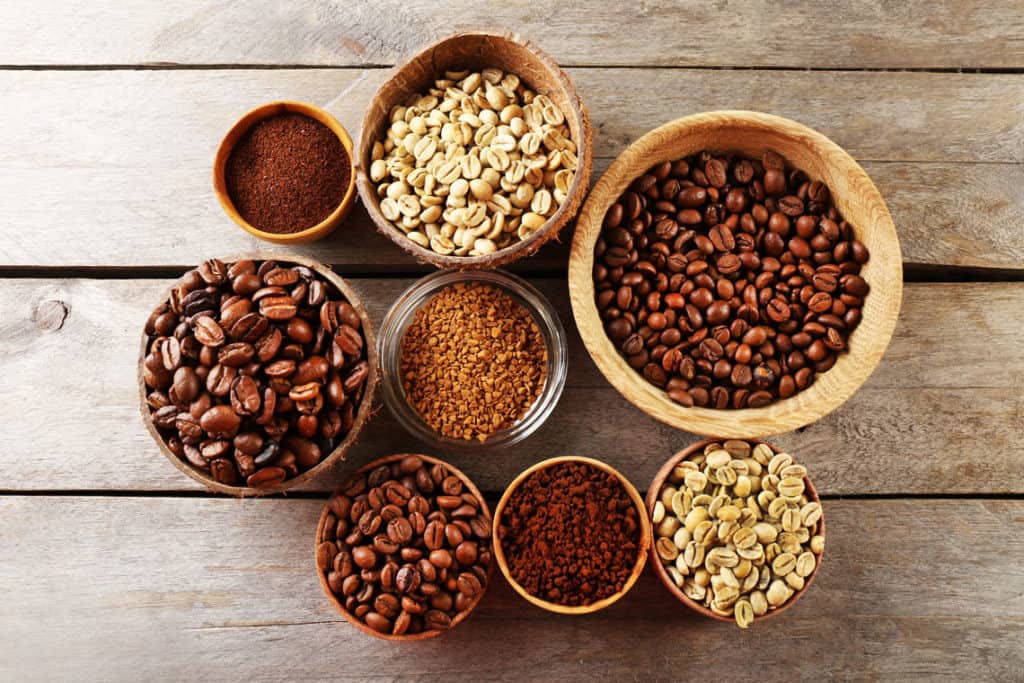Did you ever wonder why some coffees taste like a fruit party while others give off a more earthy vibe? Or why certain brews cause your tongue to tingle while others seem smoother? The answer to these questions lies in a single word – Acidity.
Acidity, often misconceived as an undesirable trait, plays a significant role in coffee’s overall flavor profile. It’s what gives the coffee its sparkle, contributing brightness, liveliness, and a range of flavors from fruity to wine-like. However, coffee’s acidity depends on various factors such as its origin, the roast level, the processing method, and the brewing technique.
So, today, buckle up as we dive deep into the world of coffee acidity. Our goal? To help you understand what it is, how it works, and how to select the best coffee beans based on your flavor preferences.
The Nine Major Acids in Coffee
Coffee isn’t just a great wake-up call or a trusted companion during late-night cram sessions; it’s a complex drink with over a thousand chemical compounds. Key among them are the acids, crucial elements that give your brew its distinct flavor and aroma.
There are nine major acids in coffee: chlorogenic, quinic, citric, acetic, lactic, malic, phosphoric, linoleic, and palmitic. Now let’s look at how each of these influences your cup of joe.
- Chlorogenic Acids (CGAs): These are the most abundant acids in coffee. They break down into quinic and caffeic acids during roasting and contribute to the bitter and astringent flavors, particularly in darker roasts.
- Quinic Acid: This one results from the breakdown of CGAs during roasting. Too much quinic acid can give coffee a harsh, sour taste.
- Citric Acid: Found primarily in Arabica beans and lightly roasted coffee, citric acid adds brightness and enhances flavor clarity. It can provide notes of citrus fruits, giving coffee a lively and refreshing quality.
- Acetic Acid: Ever sensed a hint of vinegar in your coffee? That’s the acetic acid. It’s typically present in wet-processed coffees and can contribute a pleasant, tangy sharpness when balanced but can make coffee taste sour if in excess.
- Lactic Acid: Found in higher amounts in Arabicas compared to Robustas, lactic acid can give your coffee a creamy, milk-like sweetness.
- Malic Acid: Predominantly found in high-altitude coffees, malic acid offers a taste similar to green apples or pears.
- Phosphoric Acid: This one adds a sparkling acidity, often associated with high-quality Colombian coffee.
- Linoleic Acid and Palmitic Acid: These fatty acids are more about the mouthfeel than the taste, adding to the body and richness of your coffee.
To give you a better understanding, let’s explore some coffee varieties known for their high or low levels of these acids. If you crave a cup with a burst of brightness, try Ethiopian Yirgacheffe, known for its high citric acid content. On the other hand, if you prefer a smoother, low-acidity option, Brazilian Santos might be your go-to.
The pH of Coffee
The pH scale is a measure that describes the acidity or alkalinity of a solution. The scale ranges from 0 to 14, with 7 being neutral. Anything below 7 is acidic, while above 7 is alkaline.
Now, onto coffee. Generally, coffee has a pH range of 4.85 to 5.10, making it less acidic than beverages like orange juice and soda, but more so than milk or water. This acidity contributes significantly to coffee’s overall taste and mouthfeel.
But how does pH affect the flavor of coffee? A lower pH (higher acidity) can enhance the bright, fruity notes in coffee, while a higher pH (lower acidity) tends to bring out the deeper, richer flavors.
Want to geek out and measure the pH of your coffee at home? A digital pH meter is your best bet. But remember, coffee enjoyment is about more than numbers – it’s about finding a balance of flavors that you love.
How Origin Affects Acidity
Did you know that where your coffee beans come from plays a significant role in determining their acidity? Different regions produce distinct flavor profiles, thanks to variations in climate, soil composition, and altitude.
For instance, coffee beans grown in high-altitude regions like Kenya and Ethiopia typically have a higher acidity, resulting in a bright, fruity flavor profile. On the other hand, coffees from lower-altitude regions like Brazil and Sumatra often have a lower acidity, producing a heavier body with earthy or nutty tones.
Want to become an origin expert? Start by paying attention to the labels on coffee bags. Most specialty coffees will have the country of origin listed. In some cases, you may even find details about the specific region or farm. If you’re unsure, don’t hesitate to ask your coffee roaster – they’re usually more than happy to share the journey of the bean from the farm to your cup.
How Roast Level Affects Acidity
The roast level is another crucial player in determining a coffee’s acidity. When coffee beans are roasted, the heat causes the acids and sugars within the beans to break down. The longer the roast, the more these compounds break down, thus reducing the perceived acidity in the final cup.
Light roasts, with their shorter roast time, retain more of their original acidity, resulting in a bright, vibrant cup often teeming with fruity or floral notes. Medium roasts strike a balance, offering a mix of acidity and roast flavors with a more rounded body. Dark roasts, being subjected to higher temperatures for longer, have a low acidity and exhibit deeper, bolder flavors like dark chocolate or toasted nuts.
Choosing the right roast level is a subjective task and depends on your flavor preference and the brewing method you plan to use. Light roasts are often recommended for manual brewing methods like pour-over, while dark roasts pair well with espresso machines or French presses.
How Processing Method Affects Acidity
Have you ever thought about how coffee cherries transform into the flavorful beans we know and love? This magic is performed by various processing methods, each with a unique impact on the acidity and flavor of the coffee beans.
The most common processing methods include natural (or dry), washed (or wet), and honey (or pulped natural) processing. In natural processing, the coffee cherries are dried as a whole, which often leads to fruity, wine-like flavors and a lower perceived acidity. The washed process involves removing the fruit before drying, usually resulting in a clean, bright cup with a higher acidity. Honey processing, a middle-ground technique, leaves some of the fruit on the beans during drying, creating a sweet, balanced cup that marries the characteristics of natural and washed coffees.
Understanding these variables – origin, roast level, and processing method – is like unlocking a cheat code to the world of coffee. It gives you the knowledge to navigate your coffee journey and helps you choose the best beans to suit your personal taste.
How Brewing Method Affects Acidity
Ah, brewing methods—the gateway to unlocking the full potential of your coffee beans! The way we extract those flavors affects the acidity we taste in our cups. Let’s dive into some popular brewing methods and how they impact acidity.
For a balanced and bright cup, drip or pour-over brewing methods work wonders, highlighting the coffee’s acidity while maintaining its inherent qualities.
If you prefer a bolder, full-bodied experience with less perceived acidity, the French press method might be your jam.
For espresso lovers seeking a concentrated and complex taste, acidity can be intensified or subdued depending on the coffee blend and extraction parameters.
And if you’re looking for a refreshing, low-acidity option, cold brew delivers a smooth and mellow experience.
The Health Effects of Coffee Acidity
While the acidity in coffee is what gives it a unique flavor, it may also impact certain health conditions. Conditions such as acid reflux, gastric ulcers, and irritable bowel syndrome (IBS) may react to the acidity in coffee.
Some scientific studies suggest that coffee, due to its acidity and other components, may exacerbate symptoms of these conditions. However, research also points to potential health benefits of coffee, like its high antioxidant content, which can have a positive impact on overall health.
If you love coffee but suffer from these conditions, it’s essential to consult with a healthcare professional. It might also be helpful to try lower-acidity coffee options, such as dark roasts, cold brews, or coffees from regions known for lower-acidity beans.
How to Modify the Acidity of Coffee
Sometimes, you might want to tweak the acidity of your coffee to suit your preferences. Fear not, coffee adventurers—we’ve got some tricks up our sleeves!
Adding milk or cream to your coffee can balance out its acidity, thanks to their natural alkalinity. These additions can also enhance the body and texture of your cup. Sugar, while not changing the pH, can mask the acidic taste.
For a more dramatic pH shift, a pinch of baking soda can do the trick, but use it sparingly as it can significantly affect the flavor.
Remember, while these options can adjust acidity, some of them also add calories and may alter the coffee’s nutritional profile.
Conclusion
Coffee and acidity share a love story written in every cup. Whether it’s the origin of the bean, the roast level, the processing method, or the brewing technique, several factors can influence a coffee’s acidity.
But, the beauty of coffee lies in its versatility. So, we encourage you to explore, taste, and experiment. You never know, your perfect balance of acidity and flavor might be a roast away, a new origin, or a different brew method.
Last Updated on June 18, 2023 by Cristina Vélez




